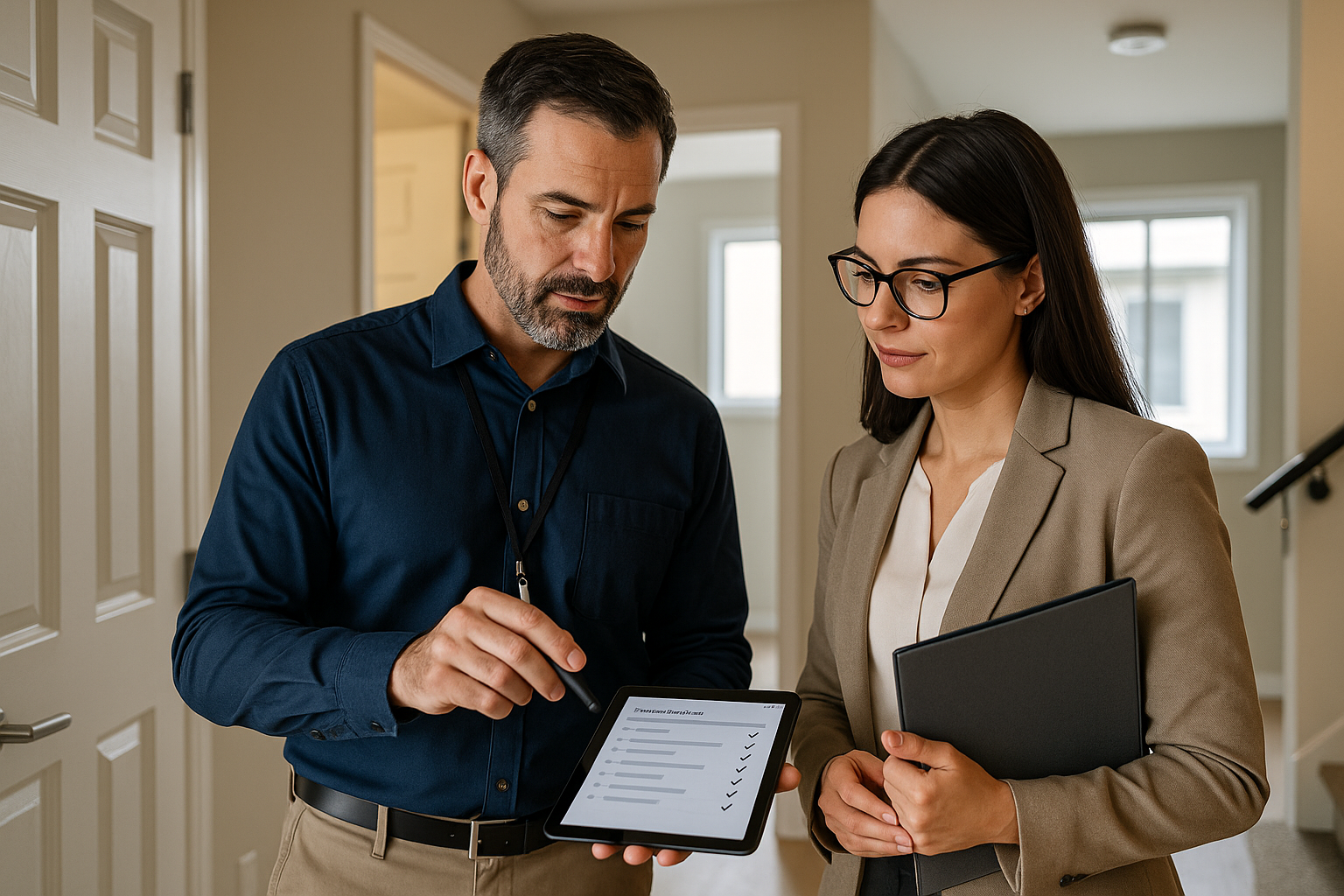Key Takeaways
- Apartment building inspections have evolved from procedural checklists into year-round compliance systems under HUD’s NSPIRE standards.
- Property managers who focus on preventive maintenance, accurate documentation, and professional support are best positioned to succeed.
Keeping your apartment buildings inspection-ready is no longer just a box to check—it’s a core part of protecting your property’s value, tenant satisfaction, and HUD compliance. With HUD’s NSPIRE (National Standards for the Physical Inspection of Real Estate) standards now in full effect, inspections are stricter, faster-paced, and more focused on resident health and safety than ever before.
This guide breaks down what property managers need to know about apartment building inspections in 2025—what’s changed, common pitfalls to avoid, and how to prepare effectively to pass the first time.
Why Apartment Building Inspections Matter
Apartment inspections ensure your property meets federal, state, and local safety and maintenance standards. For HUD-assisted properties, inspections are mandatory and directly tied to compliance, funding eligibility, and tenant well-being.
Under the new NSPIRE model, HUD has unified its inspection standards across all housing programs—including Section 8 and multifamily properties. The goal is to focus less on cosmetic issues and more on what truly impacts residents’ quality of life: safety, functionality, and sanitation.
For property managers, this means routine inspections are no longer a once-a-year rush—they’re a continuous process of prevention, documentation, and rapid response.
Understanding the NSPIRE Standards for Apartment Buildings Inspections
The NSPIRE system replaces outdated HQS and UPCS models with clear, performance-based standards. Instead of lengthy checklists filled with minor aesthetic details, NSPIRE prioritizes life-safety and health-related deficiencies.
Key changes property managers should note:
- Health and Safety Focus: Inspectors now evaluate hazards such as electrical issues, missing smoke detectors, or mold growth with greater severity.
- Simplified Scoring: Every deficiency falls into one of three categories—Life-Threatening (24 hrs), Severe (30 days), or Moderate (30 days).
- Broader Coverage: Inspectors assess individual units, common areas, and building exteriors to ensure complete safety and functionality.
To stay ahead, managers should align their internal checklists with HUD’s official NSPIRE guidelines and keep them up to date with periodic updates.
Common Issues Found During Apartment Building Inspections
Even well-managed properties can fail inspections due to overlooked issues. NSPIRE’s severity-based scoring means small maintenance lapses can quickly escalate into compliance risks.
Here are the most common deficiencies flagged during HUD or local inspections:
- Missing or nonfunctional smoke and carbon monoxide alarms
- Exposed or damaged electrical wiring and non-GFCI outlets near water sources
- Leaks, mold, or moisture around kitchens, bathrooms, and ceilings
- Broken windows, loose handrails, or inoperable doors
- Blocked fire exits or poor lighting in hallways
- Pest infestations or unsealed access points
Under NSPIRE, these issues cannot wait until the next annual inspection—some require correction within 24 hours. Consistent maintenance and early detection are now the best defense.
How Property Managers Can Prepare for an Apartment Inspection
The best inspection strategy is prevention. HUD now expects ongoing compliance, not last-minute repairs. Here’s how property managers can stay proactive year-round:
- Conduct Regular Self-Inspections: Use HUD’s NSPIRE checklist every quarter to catch issues before inspectors do.
- Digitize the Process: Use mobile inspection apps or maintenance management software to track, photograph, and log every finding.
- Train Maintenance Staff: Ensure your team understands new NSPIRE criteria and can classify deficiencies correctly.
- Fix Small Issues Immediately: Don’t wait for them to become severe. Replace smoke alarm batteries, repair cracks, and test GFCI outlets regularly.
- Engage Tenants: Encourage residents to report hazards early—tenants first notice many life-safety issues.
Partner with our team for professional apartment repair and compliance services that help you pass inspections the first time.
Proactive Maintenance and Digital Tools That Simplify Compliance
Modern property management depends on data. Tools like CMMS (Computerized Maintenance Management Systems) and mobile inspection apps help managers stay inspection-ready by automatically tracking maintenance, repairs, and deadlines.
Benefits of digital inspection tools include:
- Instant visibility into repair timelines and inspection results
- Real-time photo documentation for audit protection
- Faster coordination between staff and vendors
- Preventive alerts for recurring issues
Pairing technology with regular human walkthroughs ensures that nothing falls through the cracks—and that your buildings stay compliant year-round.
When to Call the Experts
Even the most organized property managers can benefit from a second set of eyes. That’s where NSPIRE Experts come in.
Our team specializes in HUD inspection readiness, offering:
- Comprehensive Pre-Inspections to identify deficiencies early
- On-Site Repairs to correct issues before inspection day
- Inspection Shadowing to advocate for fair scoring during your official evaluation
We operate nationwide with 48-hour turnaround times and unmatched HUD compliance experience. Whether you manage one building or a full portfolio, we make passing inspections simple, efficient, and stress-free. Schedule a free pre-inspection consultation to get your property ready with confidence.
